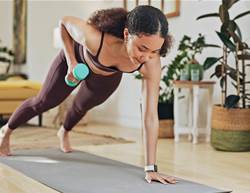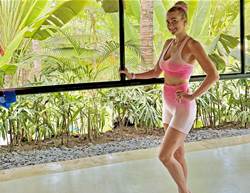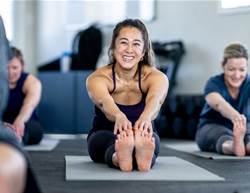- Pilates is good for strengthening core muscles, where as yoga focuses on flexibility.
- Pilates can be done on either a mat or reformer machine.
- Tori Clapham fro Peaches Pilates shares a total-body pilates workout to try at home.
While Pilates often gets confused with yoga, there are essential differences. Where yoga focuses on improving flexibility, Pilates is about strengthening core muscles. “Pilates is essentially resistance training in its purest form,” explains Tori Clapham, founder of boutique studio Peaches Pilates. “It targets important muscle groups often missed by typical gym workouts.”
Pilates is based around carefully controlled, repetitive movements. Participants have to concentrate on perfecting each move with the right, precise alignment. “There’s a whole lot of thinking involved and you may well come out of a Pilates session feeling like your brain has been worked as much as your body,” says Lizzi Webb from the Australian Pilates Method Association.
With such careful attention to correct posture and alignment, it’s a good workout for those who’ve had any kind of injury or ‘weakness’. In fact, the system stems from the work of German Joseph Pilates, who initially developed it as a way to rehabilitate bedridden patients during World War I.
Many people associate Pilates with the reformer machine, which has a bed-like frame with a flat sliding carriage, springs and pulleys. Reformer exercises generally involve pushing or pulling the carriage, or holding the carriage steady during a session, while you pull on the springs. There are also mat-based classes, which,
Lizzi explains, “are performed on the floor and primarily use bodyweight to provide resistance, strengthening and flexibility.” Mat Pilates can be done anywhere, but you’ll need to rely on your own muscles to hold you up and in place.
Whichever method you choose, proponents claim to see results quickly. “With regular practice – two to three workouts a week – you’ll notice changes in your body and mindset super fast,” says Tori. “The benefits range from injury treatment and prevention, to longer, leaner muscles, targeted muscle tone (think booty and abs!) and, most importantly, positivity and clarity when it comes to your mental state.”
Curious? Tori guides you through a mat-based total-body workout below:
1. Cat Cow
This move is perfect for easing tension in your thoracic spine (neck down to the abdomen) and lower back, as well as warming up a stiff spine after waking up or sitting at a desk all day.
BEGINNING ON YOUR HANDS and knees, slowly start moving your spine in an upwards direction, replicating the shape of an arched cat’s spine. Now reverse the move by gently bending your spine downwards towards the ground, creating a U shape with your back. Repeat 10 times or as many times as you like!

2. Pike
This move is an excellent way to lengthen your spine and build upper-body strength. Not only that, it’s a great stretch for the calves and hamstrings and can also help ease joint pain in the neck, shoulders, back, hips, knees and ankles.
STARTING ON YOUR HANDS AND KNEES, lift your knees and straighten your legs, pushing hips back and up towards the ceiling. Use your upper body to push your weight back onto your heels, stretching out the calves and hamstrings. For those less flexible, maintain a bend in the knees and work your way up to straight legs. Spend as much time as you like here, breathing deeply in through the nose and out through the mouth. Return to the starting position and repeat 10 times.
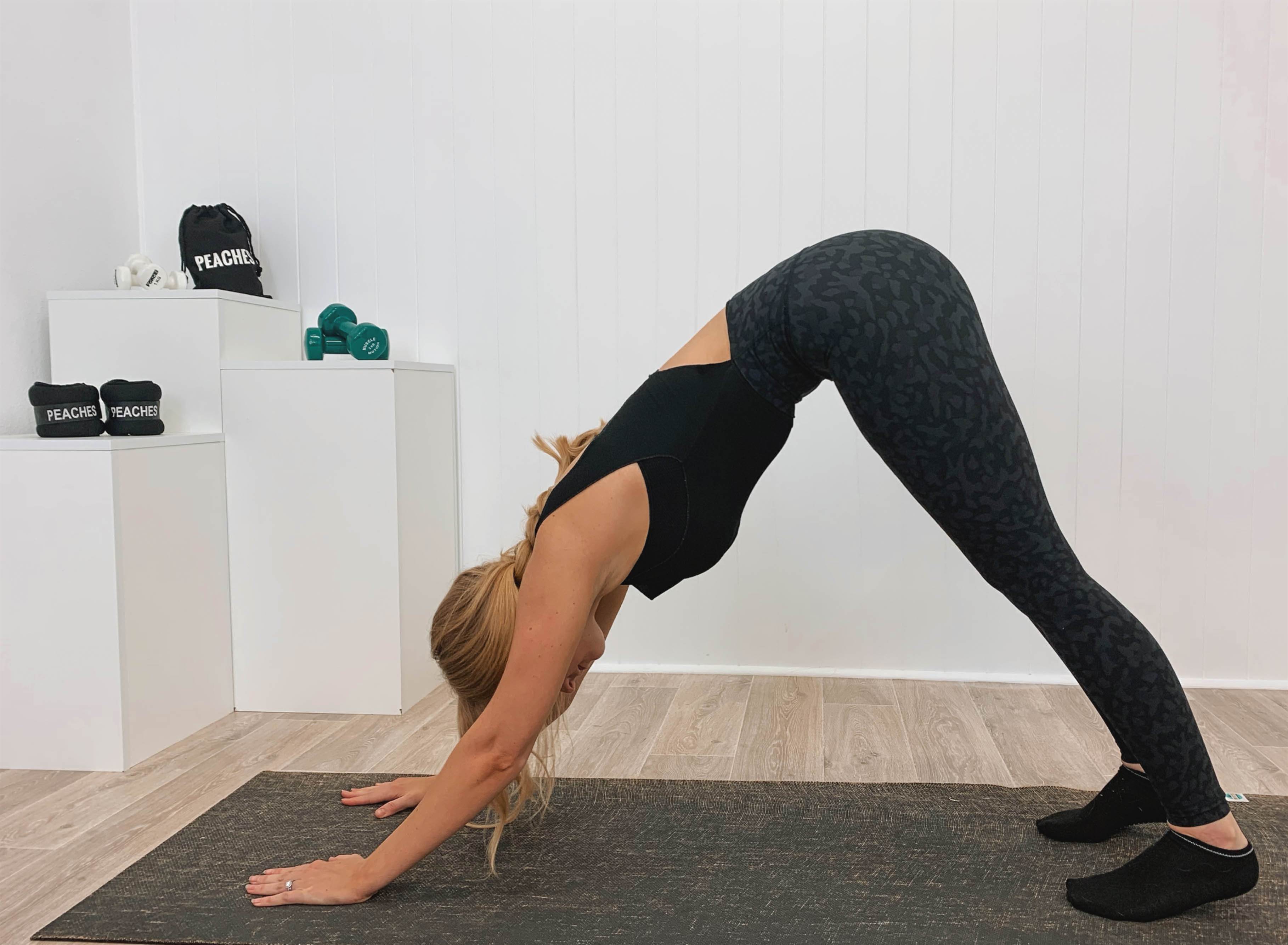
3. Quadricep
This move is ideal for those who suffer from back pain, as it works to strengthen your core muscles and stabilise the spine. It’s the perfect way for beginners to incorporate strength into their workout.
START ON ALL FOURS with your core engaged to protect your spine. When you’re feeling stable, begin to lift one arm out in front of you and then the opposite leg straight behind you. Return your arm and leg back to the starting position and then repeat on the other side. Do 10 on each side.
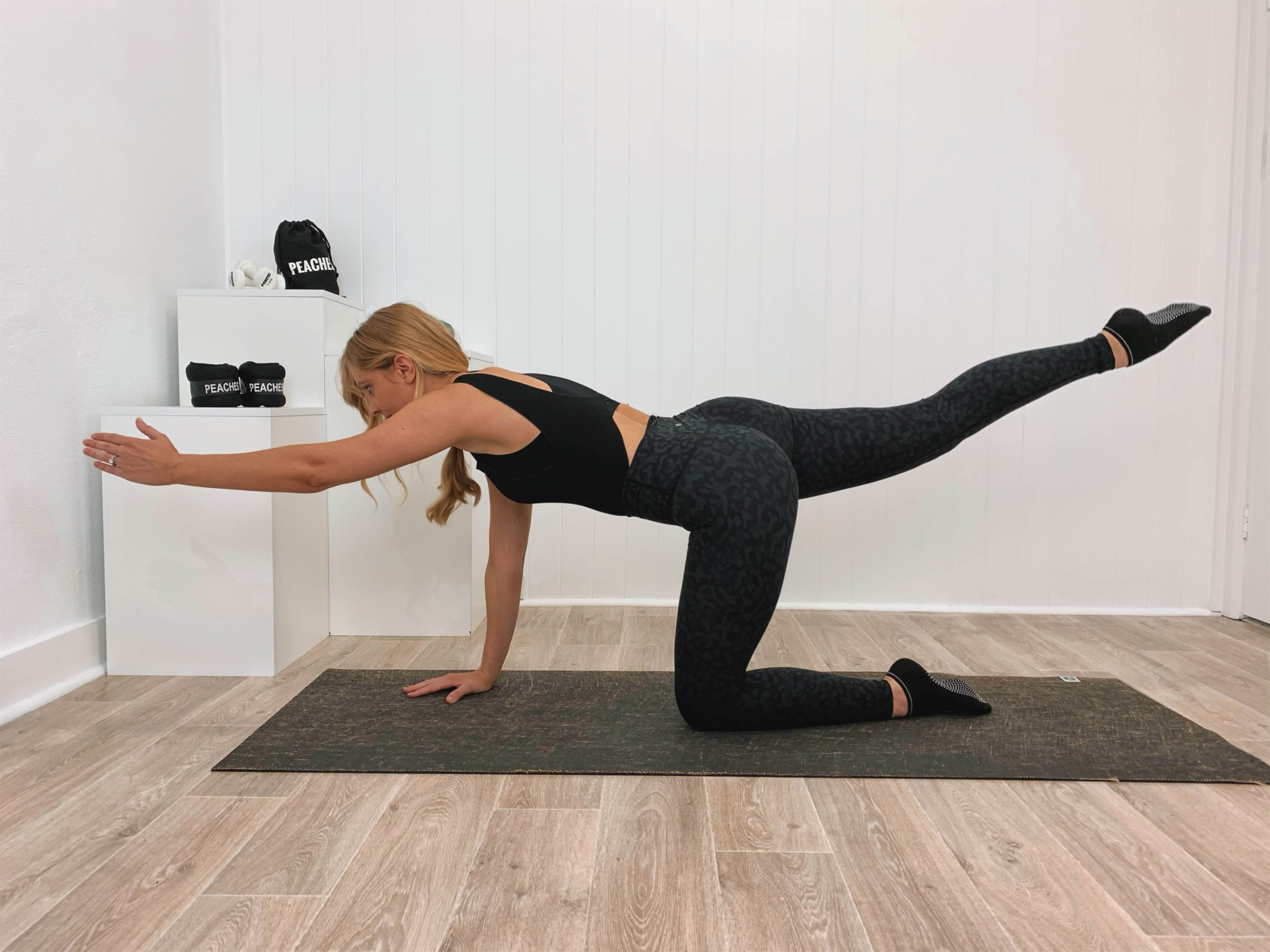
4. Double-leg Lifts (side lying)
An incredible move to improve posture, strengthen your core and relieve back pain, and especially beneficial to those with pain in the neck, shoulders and back from staring at a computer screen.
START BY LYING ON YOUR SIDE with a slight bend in the legs, engaging your core and propping yourself up with your arms. Once your body is stable, lift your top leg to hip height and bring it slightly in front of you; have the bottom leg meet the top. Straighten both legs and lift them towards the ceiling as far
as you can and then slowly lower them back down without touching the floor. Repeat 10 times on both sides.
NOTE: If you find this move difficult, try keeping the bottom leg on the ground and just perform the move with the top leg and work your way up to the double leg. You’ll get there eventually!
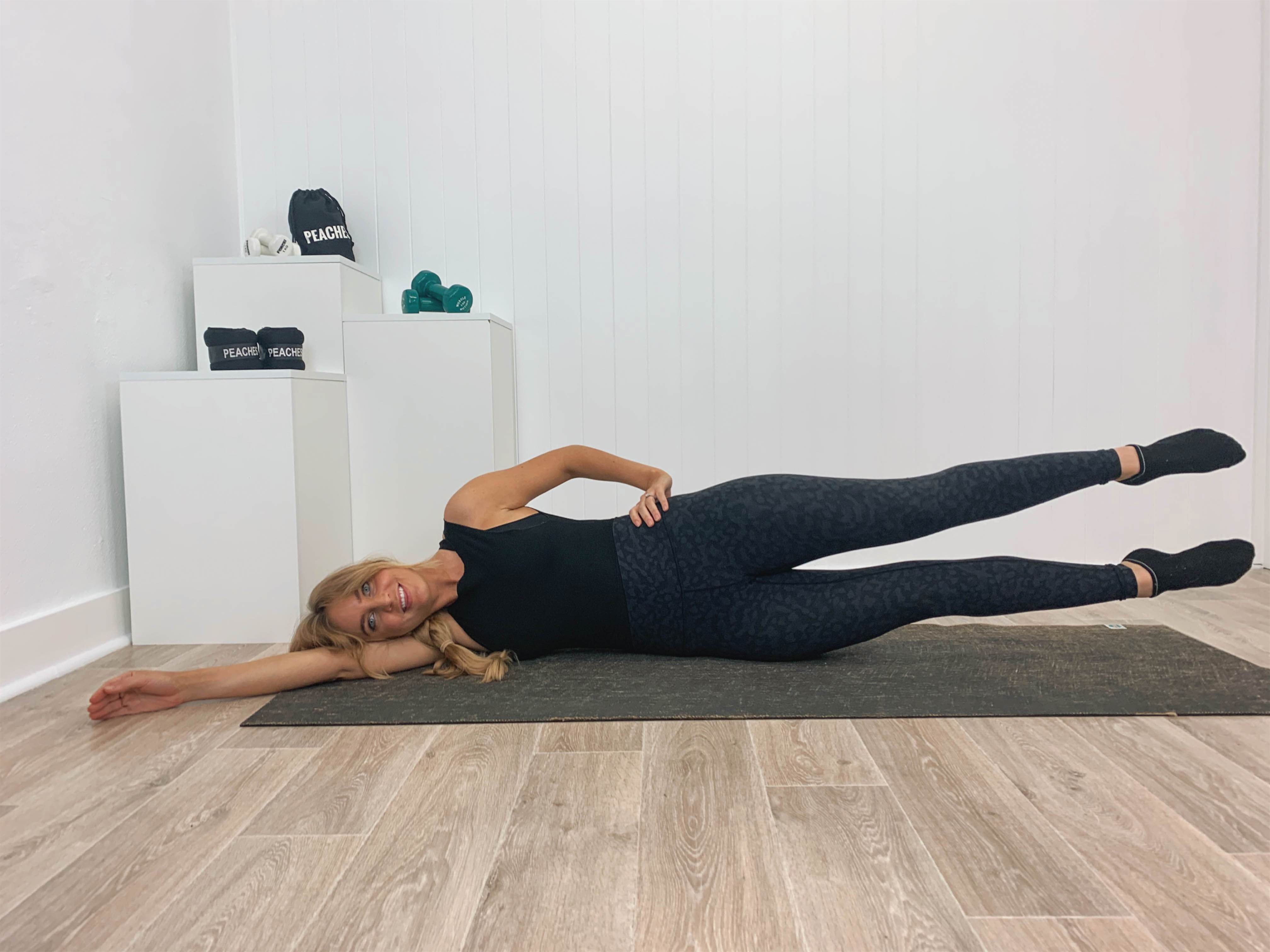
5. Horse Kicks
This amazing move will loosen stiff joints in your hips, plus strengthen your core, glutes and arms.
START ON ALL FOURS with core engaged and then lift one leg towards the ceiling, maintaining a 90-degree bend in the knee. Flex the foot and, using a kicking motion, slowly straighten your leg upwards and slightly out to the side. Bring your knee back towards your elbow and repeat the motion. Do 20 on each side.






